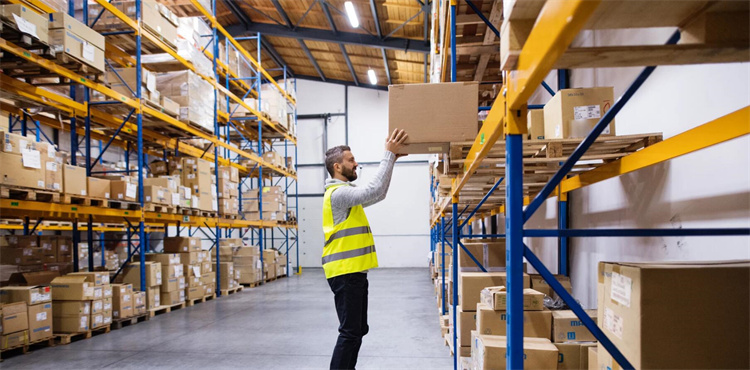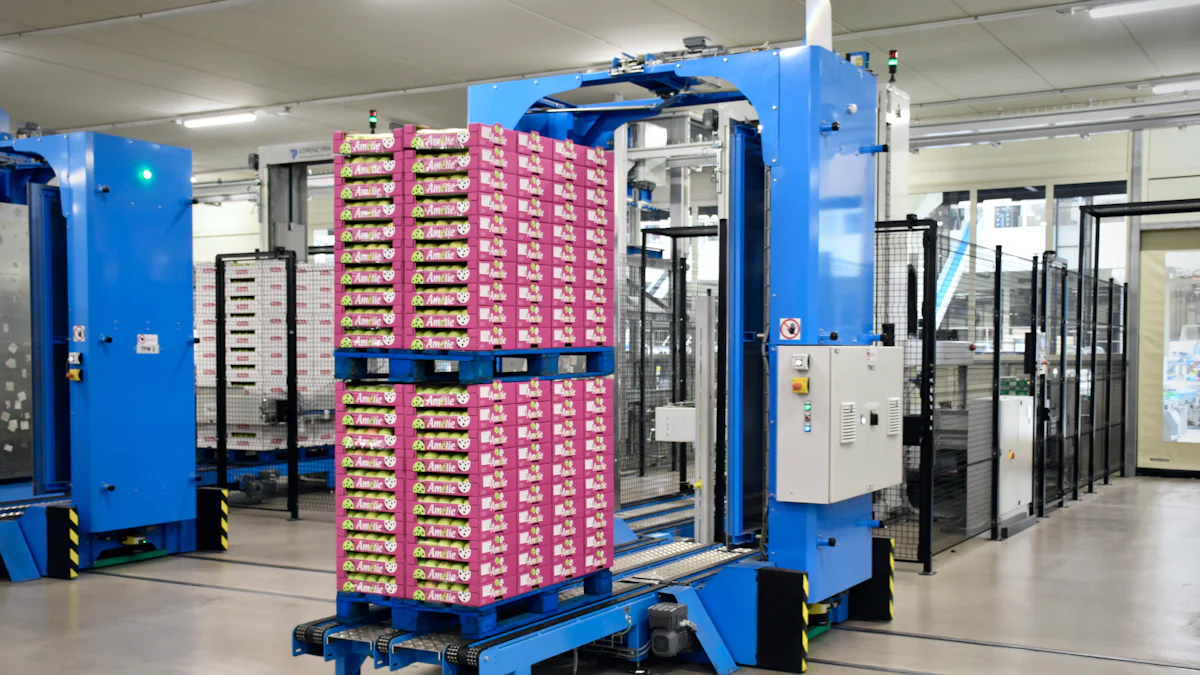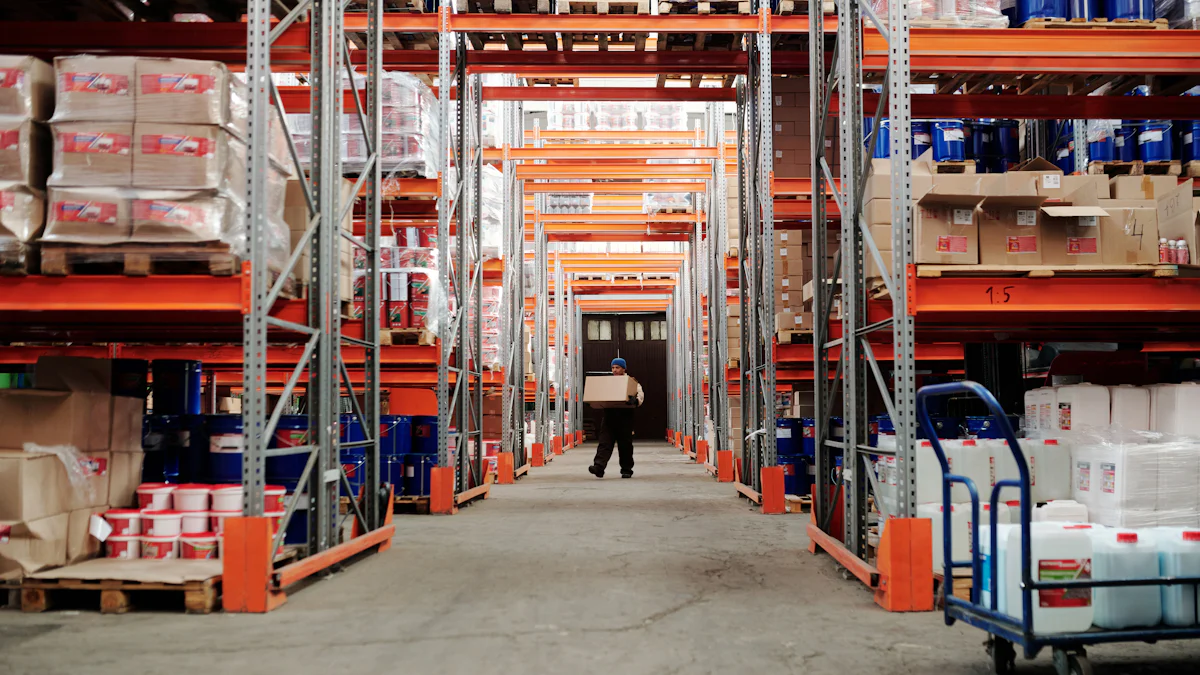Automation in Warehousing: Current Trends and Future Prospects

Warehouse automation refers to the use of technology to streamline operations within storage facilities. Automated warehousing has become essential in modern logistics, transforming traditional manual processes into efficient, error-free systems. The integration of advanced technologies enhances supply chain efficiency and productivity. Only a small percentage of warehouses currently utilize sophisticated automation equipment, highlighting the potential for growth in this sector. The future of warehousing promises significant advancements, driven by ongoing innovations in automation technology.
Current Trends in Automated Warehousing

Technological Innovations
Robotics and AI
Robotics and AI have become integral components of automated warehousing. Robotics streamline tasks such as picking, packing, and sorting. AI enhances decision-making by analyzing vast amounts of data. Automated systems reduce human error and increase operational efficiency. Companies invest in robotics and AI to stay competitive in the logistics industry. These technologies optimize warehouse operations and improve inventory management.
Internet of Things (IoT)
The Internet of Things (IoT) connects devices and systems within warehouses. IoT enables real-time monitoring and data collection. Sensors track inventory levels, temperature, and humidity. IoT enhances supply chain visibility and improves decision-making. Automated warehousing benefits from IoT through increased accuracy and efficiency. Companies use IoT to optimize storage space and reduce operational costs.
Industry Adoption
Case Study: JUSDA's Cloud Warehouse Service
JUSDA's Cloud Warehouse Service revolutionizes supply chain management. The service provides real-time data insights for inventory management. A leading electronics manufacturer optimized inventory with JUSDA's solutions. The company achieved significant cost savings and improved decision-making. JUSDA's cloud-based services enhance warehouse and distribution operations. The service streamlines processes and increases efficiency.
Adoption Rates Across Different Sectors
Automated warehousing sees varied adoption rates across sectors. Industries like electronics and consumer goods lead in automation adoption. Companies in these sectors prioritize efficiency and accuracy. Automated systems improve order processing and inventory management. Other sectors gradually embrace automation to remain competitive. Adoption rates continue to rise as technology advances.
Benefits of Automation
Increased Efficiency
Automated warehousing significantly boosts efficiency. Robotics and AI speed up order processing and reduce errors. IoT provides real-time data for better decision-making. Companies experience faster turnaround times and improved productivity. Automation allows businesses to handle higher volumes with ease.
Cost Reduction
Automation leads to substantial cost reductions in warehousing. Companies save on labor costs by reducing manual tasks. Automated systems optimize space utilization and minimize waste. IoT and AI improve inventory management and reduce overstocking. Businesses achieve a 25% reduction in operational costs through automation. Cost savings enhance competitiveness in the logistics industry.
Challenges in Implementing Automation
Financial Constraints
Initial Investment Costs
Automated warehousing requires significant initial investment. Companies need to purchase advanced technologies like robotics and software solutions. These technologies optimize day-to-day warehouse tasks. The cost of these technologies can be high. Businesses often hesitate due to the upfront financial burden. However, automated warehousing offers long-term benefits. The investment leads to improved productivity and reduced costs over time.
Return on Investment (ROI) Concerns
Return on investment (ROI) concerns also pose challenges. Companies worry about the time it takes to see returns. Automated warehousing promises efficiency and cost savings. However, businesses must wait to realize these benefits. The delay in ROI can deter companies from adopting automation. Despite this, automated warehousing remains a strategic investment. The long-term gains outweigh the initial costs.
Technical Challenges
Integration with Existing Systems
Integration with existing systems presents technical challenges. Automated warehousing involves new technologies. These technologies must work with current systems. Compatibility issues often arise. Businesses face difficulties in merging old and new systems. Successful integration requires careful planning. Companies must ensure seamless operation of all systems.
Maintenance and Support
Maintenance and support are crucial for automated warehousing. Advanced technologies require regular upkeep. Companies need skilled personnel for maintenance tasks. Automated systems can fail without proper support. Businesses must invest in training for maintenance staff. This ensures smooth operation of automated warehousing systems.
Workforce Implications
Job Displacement Concerns
Job displacement concerns arise with automated warehousing. Automation reduces the need for manual labor. Workers fear losing their jobs to machines. This concern creates resistance to automation. Companies must address these fears. Businesses can reassure workers by highlighting new opportunities. Automation creates roles in system management and oversight.
Need for Retraining and Upskilling
Retraining and upskilling become necessary with automation. Automated warehousing introduces new technologies. Workers need new skills to operate these systems. Companies must invest in employee training programs. Training helps workers adapt to automated environments. Businesses benefit from a skilled workforce. Employees gain valuable skills for future roles.
Future Prospects of Automated Warehousing

Emerging Technologies
Autonomous Vehicles
Autonomous vehicles are set to revolutionize automated warehousing. These vehicles, including automated guided vehicles (AGVs) and autonomous mobile robots (AMRs), navigate warehouses with precision. They perform tasks such as transporting goods and materials without human intervention. The integration of autonomous vehicles reduces the need for manual labor. This technology enhances operational efficiency and minimizes errors. Safety within warehouses improves significantly with autonomous vehicles.
Advanced Data Analytics
Advanced data analytics plays a crucial role in the future of automated warehousing. Analytics tools process vast amounts of data to provide actionable insights. Warehouses use these insights to optimize inventory management and streamline operations. Data analytics enhances decision-making by predicting demand patterns and identifying inefficiencies. This technology enables warehouses to operate more efficiently and cost-effectively. The use of advanced analytics ensures that warehouses remain competitive in a rapidly evolving industry.
Strategic Planning
Long-term Investment Strategies
Long-term investment strategies are essential for the success of automated warehousing. Companies must allocate resources to acquire and maintain advanced technologies. Investments in robotics, AI, and IoT yield significant returns over time. Businesses should focus on developing scalable solutions that adapt to changing market demands. Strategic planning involves evaluating the potential benefits of automation against initial costs. Companies that invest wisely in automation gain a competitive edge in the logistics sector.
Collaboration with Tech Partners
Collaboration with tech partners is vital for advancing automated warehousing. Partnerships with technology providers facilitate access to cutting-edge solutions. These collaborations enable warehouses to implement the latest innovations seamlessly. Tech partners offer expertise in integrating new systems with existing infrastructure. Successful collaborations result in improved warehouse performance and reduced operational costs. Companies benefit from shared knowledge and resources through strategic partnerships.
Human Resources and Talent Development
Developing New Skill Sets
Developing new skill sets is crucial for workers in automated warehousing environments. Employees must learn to operate and manage advanced technologies. Training programs equip workers with the necessary skills to thrive in automated settings. Companies invest in education to ensure a skilled workforce capable of handling modern systems. Workers gain valuable expertise that enhances their career prospects. A well-trained workforce contributes to the overall success of automated warehousing initiatives.
Creating a Culture of Innovation
Creating a culture of innovation is essential for the future of automated warehousing. Companies must foster an environment that encourages creativity and experimentation. Innovation drives the development of new technologies and processes. Businesses that prioritize innovation remain at the forefront of industry advancements. A culture of innovation attracts top talent and promotes continuous improvement. Embracing innovation ensures that warehouses adapt to evolving market needs and technological trends.
Automation in warehousing plays a pivotal role in enhancing operational efficiency and reducing costs. Companies must find the right balance between technology and human resources to maintain competitiveness. Human workers contribute essential skills such as problem-solving and critical thinking. Businesses should focus on upskilling employees to complement automation. Future trends indicate that automation will continue to evolve, offering new opportunities for innovation and growth. Emphasizing collaboration between humans and machines will lead to a more productive and adaptive workforce.
See Also
Automated Future: Benefits of High-Tech Manufacturing Warehouses
Boosting Efficiency: Explanation of Robotic Automation in Warehousing
Logistics Robotics Power: Improving Warehouse Productivity
